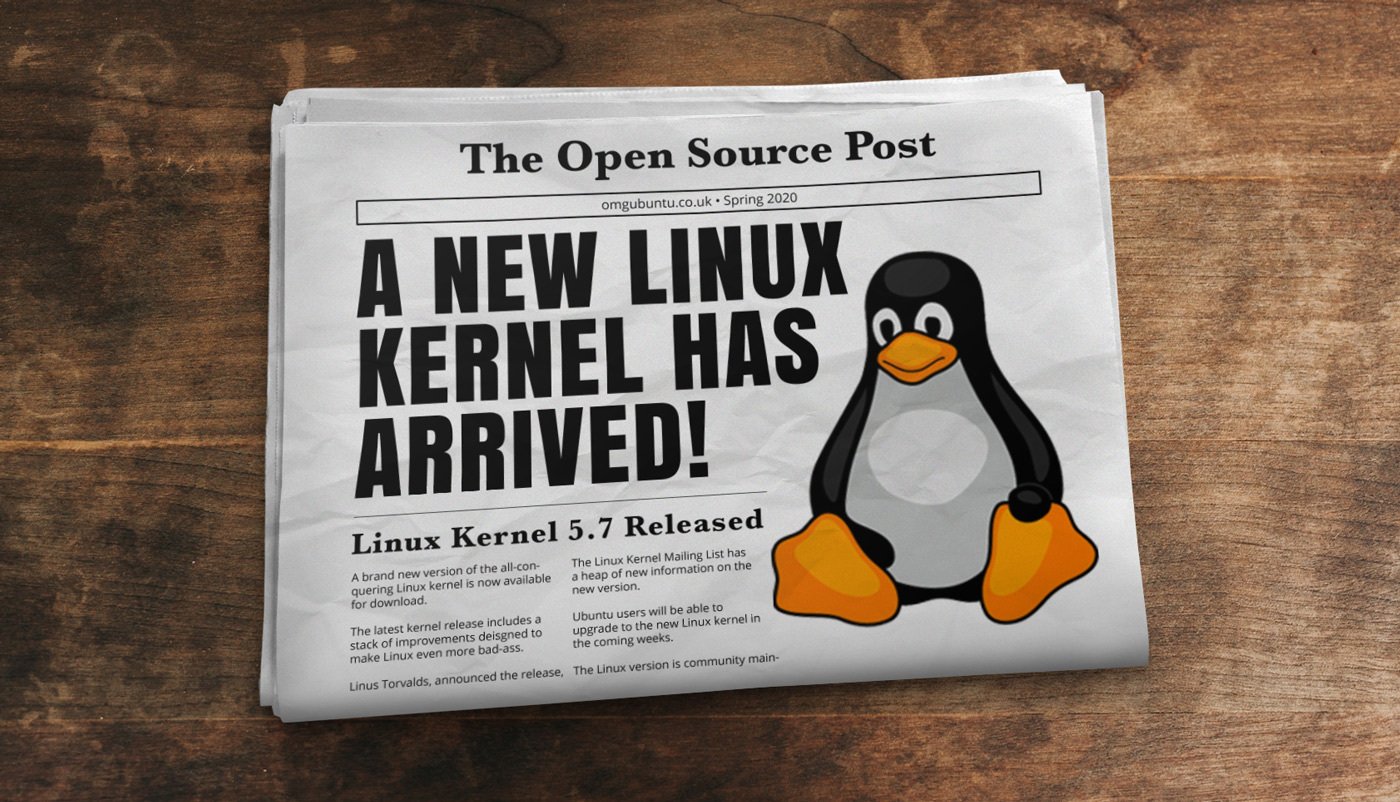Linux 5.7 has arrived, serving as the latest mainline release of the Linux Kernel — but what’s changed? Well, in this post we recap the new features and core changes bundled up inside this kernel update.
As per tradition Linus Torvalds announced the release of Linux 5.7 in an email to the Linux Kernel Mailing List (LKML), where he says: “We’ve got a lot of changes in 5.7 as usual (all the stats look normal – but “normal” for us obviously pretty big and means “almost 14 thousand non-merge commits all over, from close to two thousand developers)”.
Fun fact: Linus recently switched from Intel to AMD, which he hasn’t used for quite a while!
While the Linux 5.7 kernel will likely be available for testing in Ubuntu 20.10 during development it’s not yet clear precisely which kernel version will be offered in the final stable release come October (and thus be back-ported to Ubuntu 20.04 LTS as a HWE update in 20.04.2 LTS).
Linux 5.7 Features
The headline feature of Linux 5.7 is the inclusion of a new exFAT driver from Samsung. This brings out-of-the-box ability to read and write to the exFAT filesystem developed by Microsoft and popular in a wide range of devices (not all Windows-related).
Now, you may have heard about plans for this before. But it’s only with this kernel release that Samsung’s modern and more capable exFAT driver is included. It replaces an earlier, less-finessed version contributed by Microsoft.
Linux 5.7 also intros thermal pressure checking to the task scheduler. While this is a notable technical change (LWN has a good primer) the key benefit is better performance when CPUs are overheating — which is tl;dt: good!
Also of note: Linux 5.7 support Intel Tiger Lake graphics (aka generation 12) and AMD Ryzen 400 ‘Renoir’ graphics. While this support isn’t technically new it is no longer hidden behind a kernel module flag.
Also featured is mainline kernel support for the PineTab, PinePhone and PineBook Pro. Linux 5.7 boasts de-facto compatibility with the RockChip RK3399 SoC used in the refreshed PineBook, and the AllWinner A64 chip used in the PinePhone.
ARM support is boosted elsewhere too, with mainline embrace for the Qualcomm Snapdragon 865, NXP i.MX8M Plus, and the Mediatek MT8516 SoC.
This kernel also adds support for EFI “mixed mode” booting. This allows 64-bit x86 kernels to be booted from 32-bit firmware running on 64-bit capable CPUs.
Presonus Studio 1810c, MOTU MicroBook IIc, Goodix GT917S and GT9147 touchscreens, and the Logitech G11 keyboard are among the new bits of hardware to gain native support or whose support has been improved.
Other changes:
- Zstd compression support for F2FS filesystems
- Improved Longsoon 3 CPU support
- Experimental support for swap over SMB3 mounts
- Support for Apple’s USB Fast Charge
- Better Meson video decoding in staging
- Split lock detection
- ACPI support for USB interface devices
As always, there are a tonne of bug fixes, security improvements, networking refinement, and oodles upon oodles of file system finesse for pretty much every file system you can think of.
For a deep-dive on everything new in Linux 5.7 head over to Kernel Newbies.
Installing Linux 5.7 on Ubuntu
Wondering when you might get to sample this selection of bevvy of betterments? Well, that will vary.
You can install mainline Linux kernels in Ubuntu, Linux Mint and other Ubuntu-based distributions using mainline kernel builds built by Ubuntu developers — but this is not advised.
Ubuntu uses the Ubuntu Linux kernel (which is like the upstream one, but with some Ubuntu specific patches or tweaks made). Major new Ubuntu Linux kernel releases don’t happen often and, when they do, they’re typically tied to a new stable release.
If you really can’t wait for Ubuntu to backport this kernel and you really want to go ahead and install it from here — but do so knowing that if your system breaks you get to keep the pieces.

